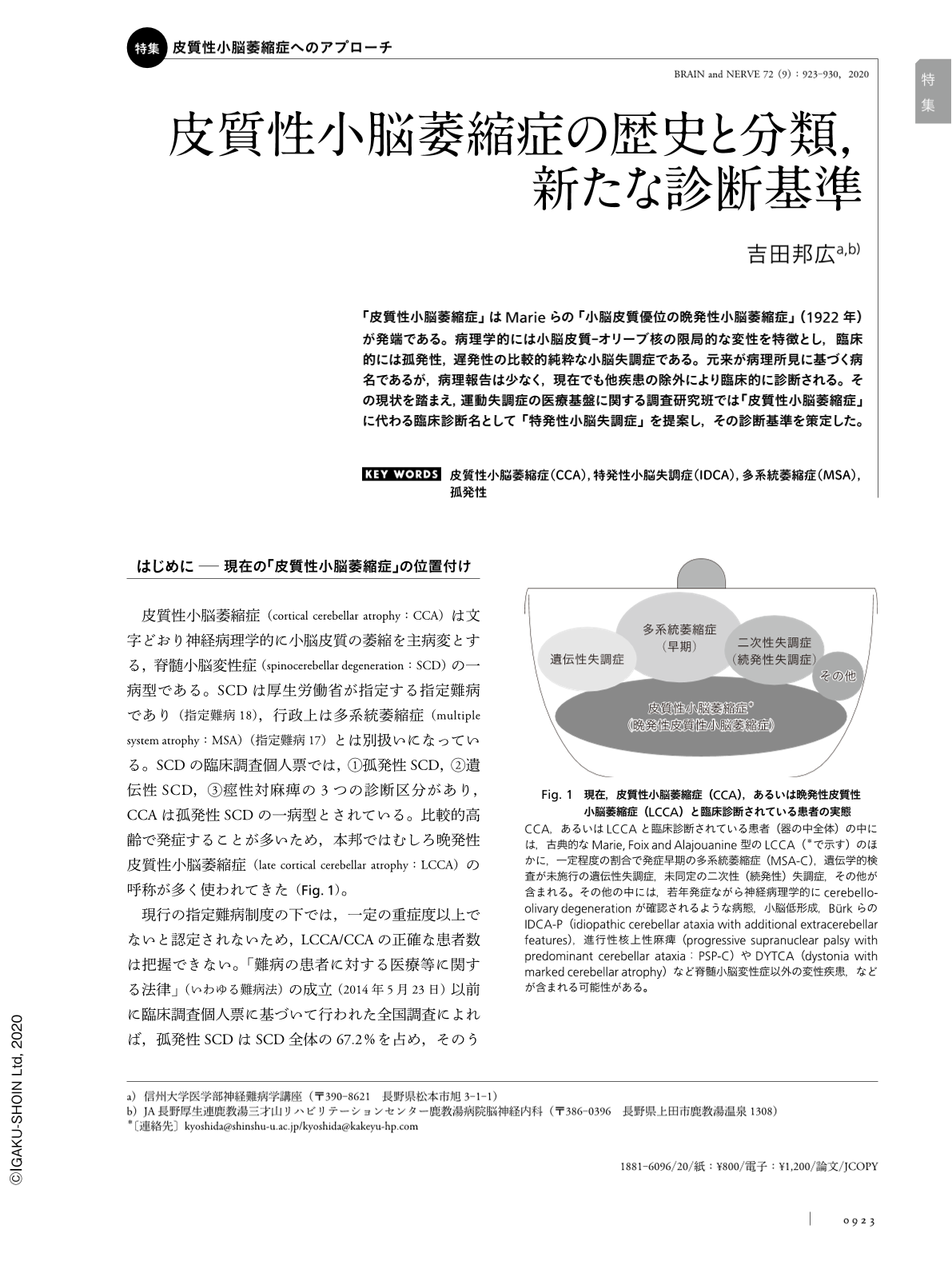Japanese
English
- 有料閲覧
- Abstract 文献概要
- 1ページ目 Look Inside
- 参考文献 Reference
「皮質性小脳萎縮症」はMarieらの「小脳皮質優位の晩発性小脳萎縮症」(1922年)が発端である。病理学的には小脳皮質-オリーブ核の限局的な変性を特徴とし,臨床的には孤発性,遅発性の比較的純粋な小脳失調症である。元来が病理所見に基づく病名であるが,病理報告は少なく,現在でも他疾患の除外により臨床的に診断される。その現状を踏まえ,運動失調症の医療基盤に関する調査研究班では「皮質性小脳萎縮症」に代わる臨床診断名として「特発性小脳失調症」を提案し,その診断基準を策定した。
Abstract
Marie et al. (1922) first proposed a disease entity “late cortical cerebellar atrophy (LCCA)”, which is characterized neuropathologically by pure cerebello-olivary degeneration. LCCA was originally described as sporadic, late-onset, pure cerebellar ataxia of unknown etiology; however, it has occasionally been used to denote familial or secondary ataxias, particularly alcoholic cerebellar degeneration. Sporadic ataxia is classified mainly into LCCA or CCA and olivo-ponto-cerebellar atrophy (OPCA) in Japan. OPCA, now multiple system atrophy with predominant cerebellar ataxia, has characteristic brain imaging features and is clearly diagnosed based on the consensus criteria. On the other hand, there is no specific biomarker for LCCA/CCA, and neuropathological examination is required for a definitive diagnosis. Therefore, the clinical diagnosis of LCCA/CCA depends on the exclusion of other diseases manifesting as cerebellar ataxia. However the differential diagnosis for LCCA/CCA is not necessarily made carefully. As a result, the LCCA/CCA category in Japan is a “waste basket,” including OPCA, hereditary ataxias, and secondary ataxias, which are unidentified yet. To refine the LCCA/CCA category, we proposed the clinically-defined term “idiopathic cerebellar ataxia (IDCA)” and established its diagnostic criteria. By nationwide screening, we have identified 51 patients with probable IDCA according to the criteria so far. Here we review the clinical characteristics of IDCA patients.

Copyright © 2020, Igaku-Shoin Ltd. All rights reserved.


